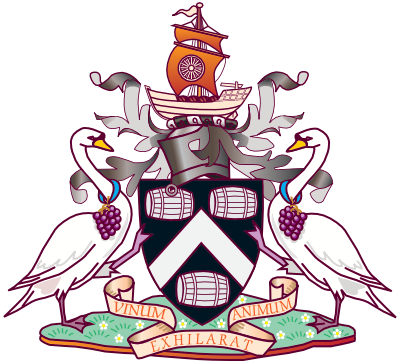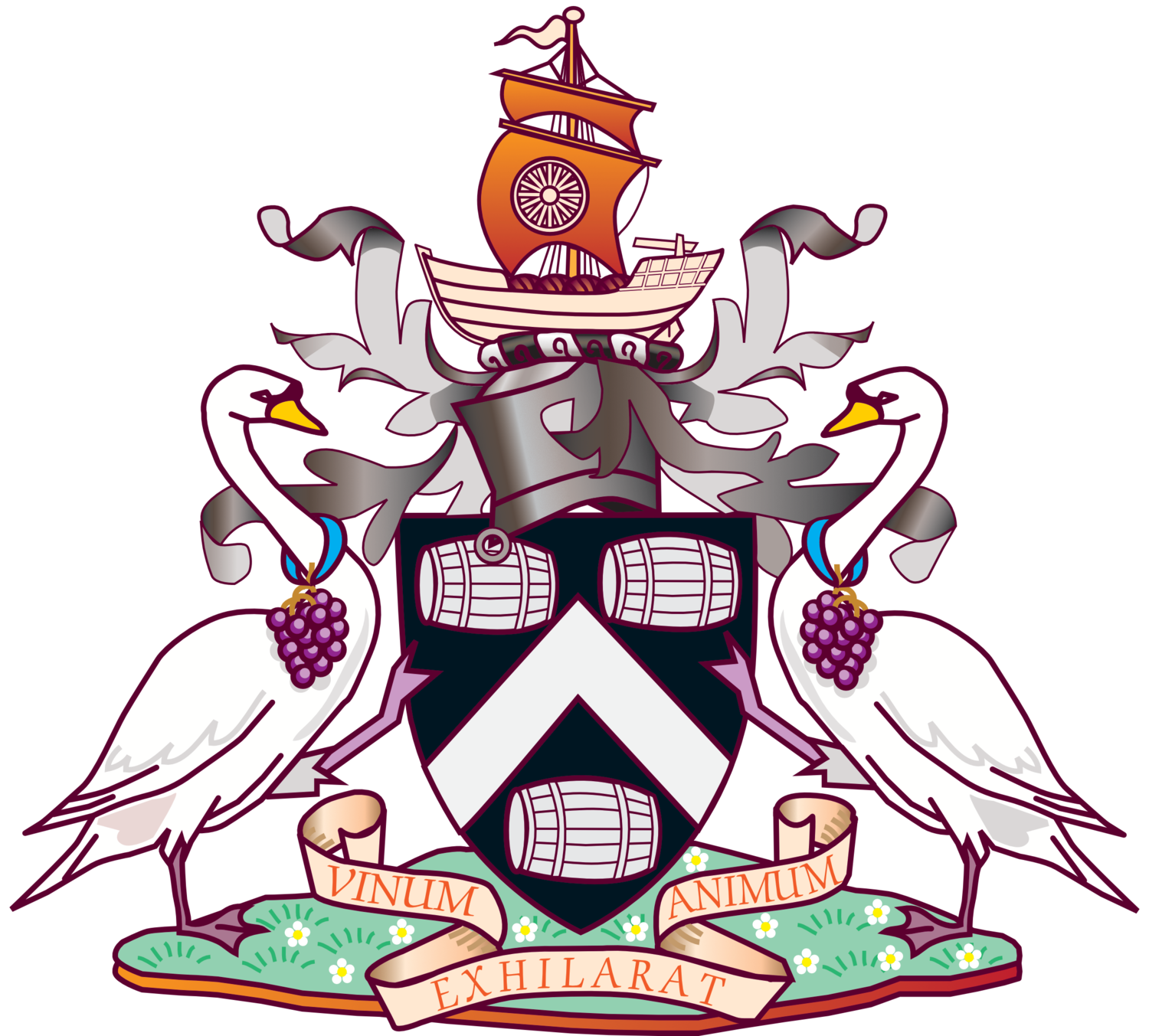
Coat of Arms
Armorial bearings
Historic recognition
Armorial bearings have their origin at the time of the Crusades, when Knights in full armour were unrecognisable on the field of battle. To confirm identification, each Knight wore a personal distinctive coat over his armour by which he could be recognised, for all to see. This was called his coat ‘of arms’ and was also displayed on his banner, shield and horsecloth. It came to be worn in civil life too.
No two men in or from the same area could wear exactly the same coat of arms. These ‘arms’ were seen as personal symbols, and used to mark the owner’s possessions. At that time few people could read or write.
Such a coat of arms was usually found on a shield. This remains the case to this day.
A personal crest was also worn on crusade – like a cock’s comb ― on top of the helmet. Below the crest a silken mantle hung down the back of the neck to protect against the heat of the sun by day. The mantling was kept in place by a wreath of twisted silk.
Today we see helmet, crest and mantling usually depicted above the shield. Shields sometimes are also held up by ‘supporters’, which stand on a mound termed a ‘compartment’. The whole assembly of shield, helmet with crest and mantling, supporters and (sometimes) motto is called the ‘achievement of arms’.
Within the City of London, the Livery Companies are authorised to have their own coats of arms, which are uniquely symbolic of their respective guilds.
Today, the governance of the design and issue of coats of arms in England resides with the College of Arms in the City of London, and in Scotland with the Lord Lyon King of Arms in Edinburgh. Sadly, but perhaps inevitably, coats of arms today are somewhat quaint, an interesting relic of past centuries. There is now little policing of them, and the College of Arms no longer carries out visitations county by county to deface and destroy unwarranted heraldry. The last heraldic lawsuit in England, Manchester City Council v Manchester Palace of Varieties Limited, took place in the 1950s. However heraldry continues to be greatly valued, both by ancient institutions and also as a fascinating hobby. In addition, and surprisingly, many modern institutions and commercial companies continue to obtain coats of arms from the College of Arms as an alternative to a registered trade mark.
French was the international language of the Middle Ages, so a number of heraldic terms have French origin. There are five colours of general use in Heraldry: – red (called ‘gules’), blue (‘azure’), black (‘sable’), green (‘vert’) and purple (‘purpure’). There are also two metals: – gold (‘or’), shown as yellow, and silver (‘argent’), shown as silver or white. Fur is also used:― ermine (white stoat with black tails); contre-ermine (black with white tails); and vair (alternate blue and white squirrel skins).
Liveryman Richard Wilson 2017
The Armorial Bearings of the Company
The motto Vinum Exhilarat Animum (Wine Gladdens the Spirit) was registered in 1822.
The crest, and swan supporters, were granted in 1957. They were organised by Liveryman Sir Anthony Wagner (later to become Master of the Company in 1973), a Herald at the College of Arms.
The full description in heraldic language is as follows:
Coat of Arms – Sable a chevron between three tuns argent.
Crest – On a wreath argent and sable, a caravel or, laden with tuns proper, the sails gules, the mainsail charged with a cartwheel or, and from the masthead a pennon argent.
(The caravel represents a type of boat which was used to carry wine tuns. The mainsail reproduces the cartwheel attributed to our patron saint, St Martin of Tours.)
Mantling – Sable doubled argent.
Supporters – On either side a swan, the dexter a cob and the sinister a pen, both nicked in the beak with the mark of the Company all proper, about the neck of each a riband azure, pendant therefrom a bunch of grapes also proper.
Heraldic terms glossary
- Argent – silver; often shown as white
- Chevron – inverted V like a roof rafter
- Dexter ― the right-hand side of the shield, from the viewpoint of the person wearing it
- Gules – the colour red
- Mantling ― the conventional representation of a mantle from the junction of the crest, wreath and helmet
- Or – the colour gold
- Proper – shown in natural colour or colours; shown naturally
- Sable – the colour black
- Sinister ― the left-hand side of the shield, from the viewpoint of the person wearing it
- Tun ― a large cask
- Wreath – a twisted wreath of colours around the top of the helmet


